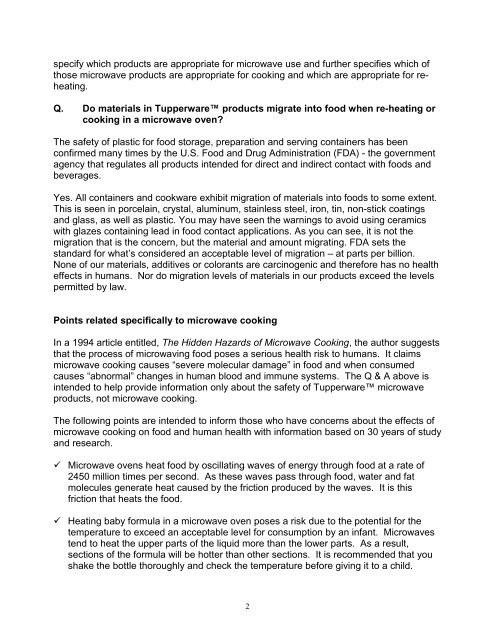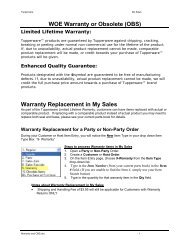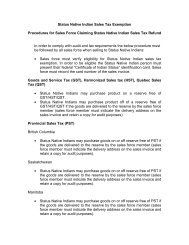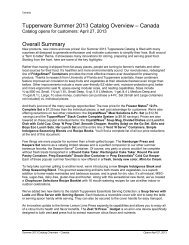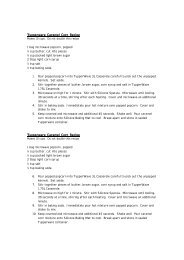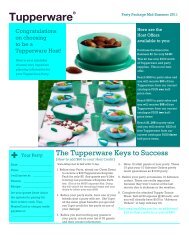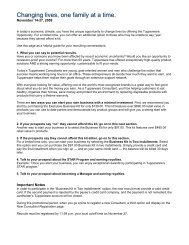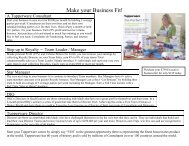Flyers Combined for Printing
Flyers Combined for Printing
Flyers Combined for Printing
You also want an ePaper? Increase the reach of your titles
YUMPU automatically turns print PDFs into web optimized ePapers that Google loves.
specify which products are appropriate <strong>for</strong> microwave use and further specifies which of<br />
those microwave products are appropriate <strong>for</strong> cooking and which are appropriate <strong>for</strong> reheating.<br />
Q. Do materials in Tupperware products migrate into food when re-heating or<br />
cooking in a microwave oven?<br />
The safety of plastic <strong>for</strong> food storage, preparation and serving containers has been<br />
confirmed many times by the U.S. Food and Drug Administration (FDA) - the government<br />
agency that regulates all products intended <strong>for</strong> direct and indirect contact with foods and<br />
beverages.<br />
Yes. All containers and cookware exhibit migration of materials into foods to some extent.<br />
This is seen in porcelain, crystal, aluminum, stainless steel, iron, tin, non-stick coatings<br />
and glass, as well as plastic. You may have seen the warnings to avoid using ceramics<br />
with glazes containing lead in food contact applications. As you can see, it is not the<br />
migration that is the concern, but the material and amount migrating. FDA sets the<br />
standard <strong>for</strong> what’s considered an acceptable level of migration – at parts per billion.<br />
None of our materials, additives or colorants are carcinogenic and there<strong>for</strong>e has no health<br />
effects in humans. Nor do migration levels of materials in our products exceed the levels<br />
permitted by law.<br />
Points related specifically to microwave cooking<br />
In a 1994 article entitled, The Hidden Hazards of Microwave Cooking, the author suggests<br />
that the process of microwaving food poses a serious health risk to humans. It claims<br />
microwave cooking causes “severe molecular damage” in food and when consumed<br />
causes “abnormal” changes in human blood and immune systems. The Q & A above is<br />
intended to help provide in<strong>for</strong>mation only about the safety of Tupperware microwave<br />
products, not microwave cooking.<br />
The following points are intended to in<strong>for</strong>m those who have concerns about the effects of<br />
microwave cooking on food and human health with in<strong>for</strong>mation based on 30 years of study<br />
and research.<br />
Microwave ovens heat food by oscillating waves of energy through food at a rate of<br />
2450 million times per second. As these waves pass through food, water and fat<br />
molecules generate heat caused by the friction produced by the waves. It is this<br />
friction that heats the food.<br />
Heating baby <strong>for</strong>mula in a microwave oven poses a risk due to the potential <strong>for</strong> the<br />
temperature to exceed an acceptable level <strong>for</strong> consumption by an infant. Microwaves<br />
tend to heat the upper parts of the liquid more than the lower parts. As a result,<br />
sections of the <strong>for</strong>mula will be hotter than other sections. It is recommended that you<br />
shake the bottle thoroughly and check the temperature be<strong>for</strong>e giving it to a child.<br />
2


